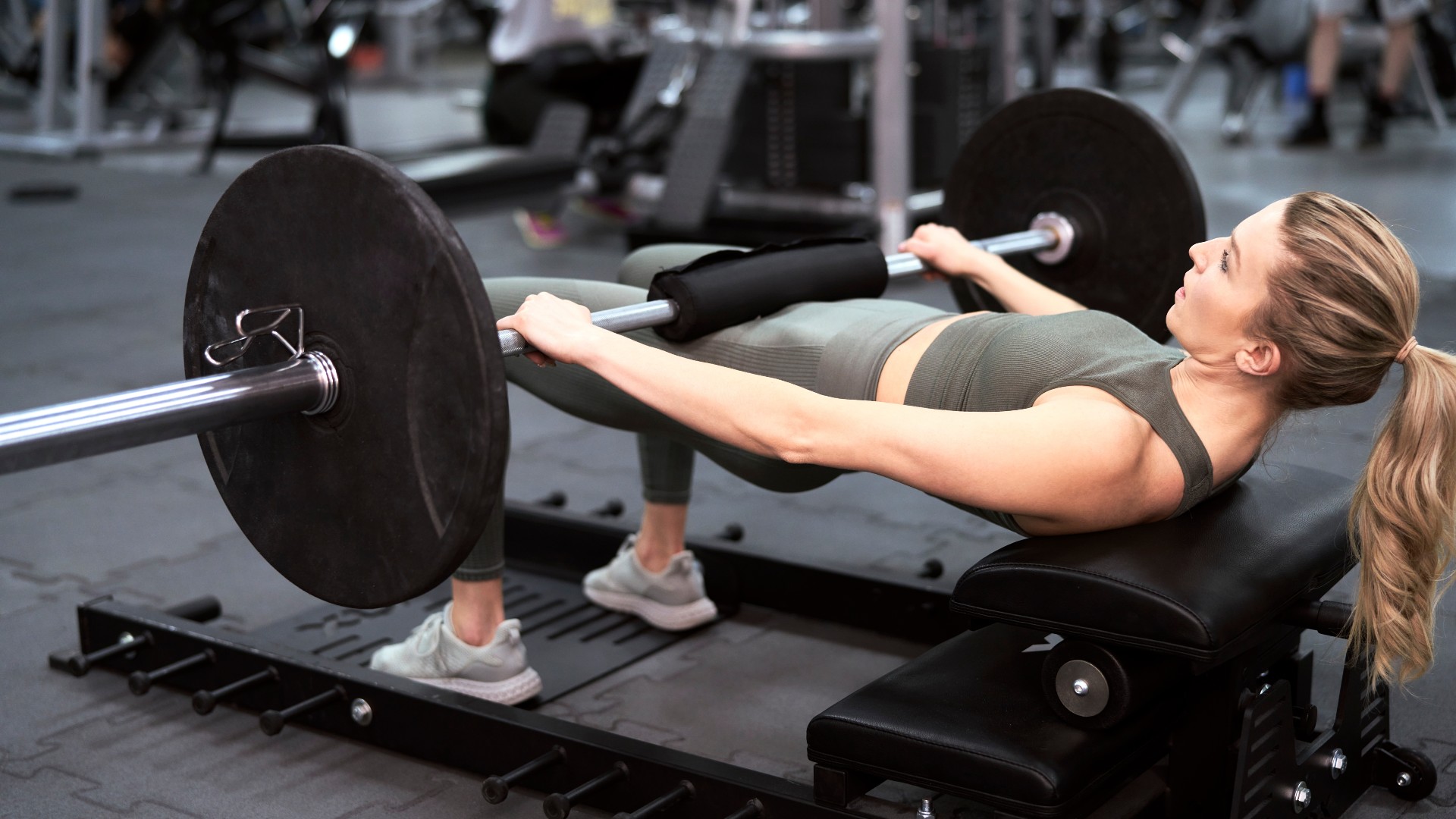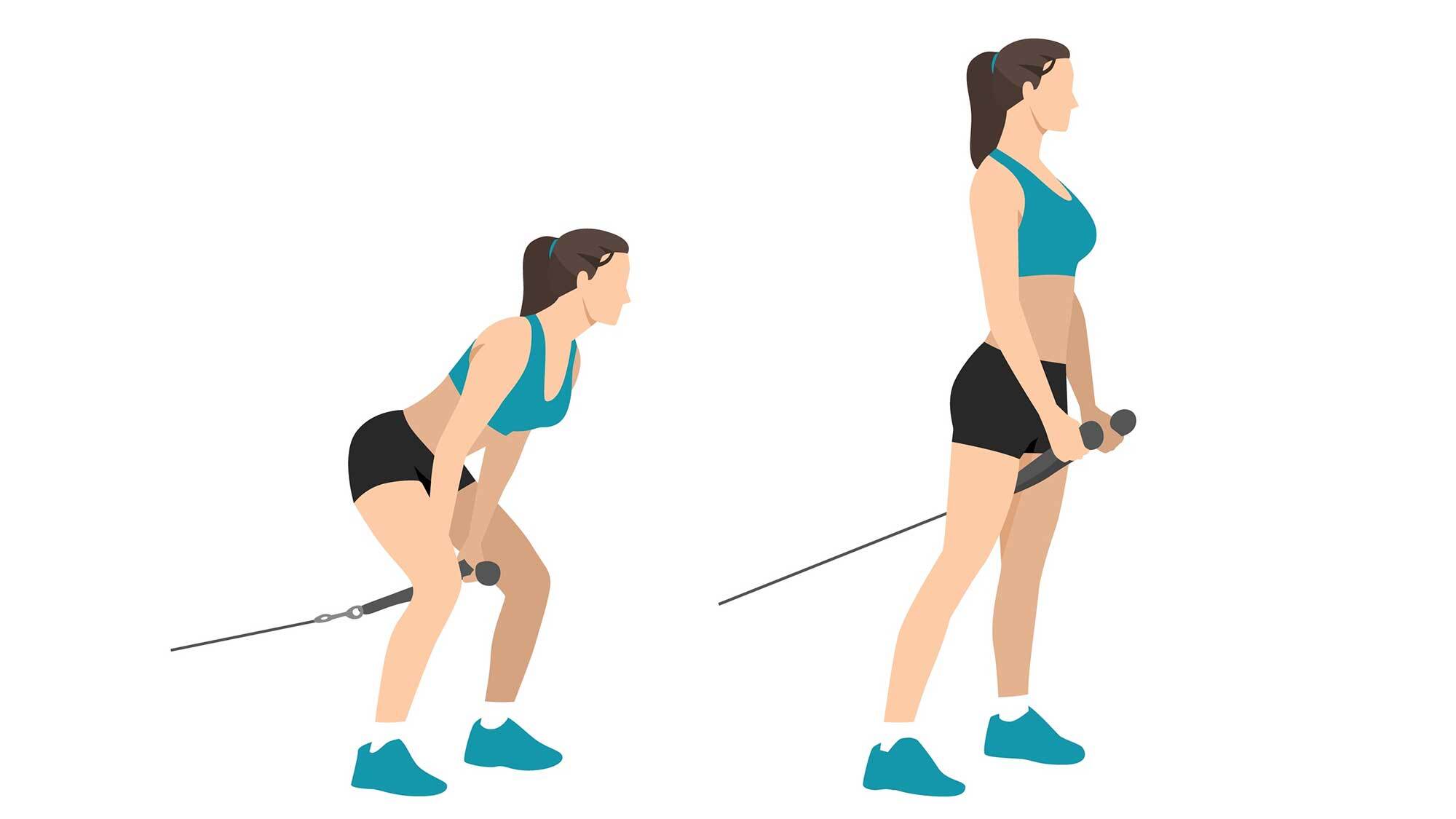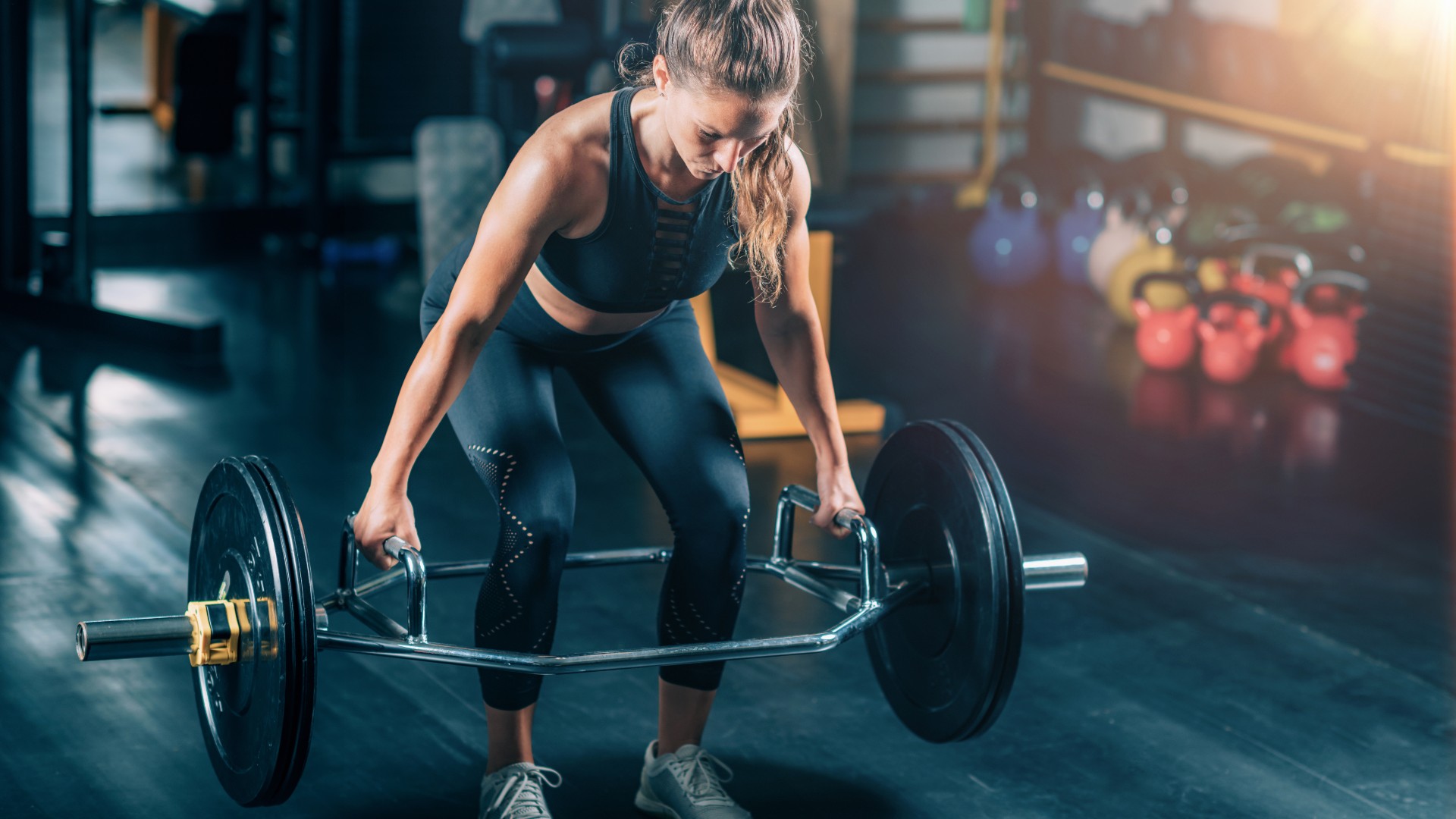
The barbell hip thrust is a popular way to build strength and muscle in your glutes as part of a consistent and varied strength program. But you could still grow your glutes without heavy barbells crowding the room.
Progressive overload is a technique used to grow muscle and build strength. It involves gradually manipulating your variables like exercises, sets, reps, and load, to increase your output and results by challenging your body to adapt. To grow stronger glutes, your program might consist of compound exercises like deadlifts and hip thrusts that target multiple muscles and joints, alongside isolation exercises that solely work your various glute muscles hard. The result? A well-rounded exercise program and backside.
But a barbell hip thrust — or any hip thrust — isn’t the only way to achieve it, and although you could add some of the best adjustable dumbbells instead, the exercise isn't for everyone. If your equipment is limited, you suffer from a lower back injury, or prefer to try something new, these two alternative exercises could grow the size, power, and definition of your glutes. Here’s how.
What is the barbell hip thrust?

The barbell hip thrust involves placing a barbell over your hips and leaning against a bench while sitting on the floor with bent knees. Driving through your feet, lifting your hips, and squeezing your glutes sends the weight upwards before slowly lowering it back down. Learn how to do hip thrusts properly here.
A barbell hip thrust uses hip extension to target the gluteus maximus (your largest and strongest muscle) alongside the gluteus medius (outer glutes), quads, adductors, hamstrings, calves, and core muscles. Gym-goers hoping to build definition in the gluteal muscles look to the exercise as top tier for building size in this area, but strengthening the muscles around your hips and knees can also help prevent injury and improve sports performance.
Variety is the spice of life, and people with lower back injuries might find “standard” hip thrusts are off the table, so having alternatives in the bank is essential for challenging your body in new ways. And although squats and lunges work your glutes, if you’re a quad-dominant exerciser, you might struggle to activate them properly. Give these exercises a go instead — I swear by them.
Hip thrust alternatives for building glute muscle, strength, and power
1. Cable pull-through

Cable pull-throughs look similar to a Romanian deadlift or Good Morning. You’re guaranteed to work your glutes hard by targeting your posterior chain — the muscles along the back of your body. You could use dumbbells and resistance bands, but I recommend using a cable machine.
Get instant access to breaking news, the hottest reviews, great deals and helpful tips.
The exercise strengthens the muscles in your lower back, glutes, and hamstrings and can help develop your deadlift technique. Like the barbell hip thrust, the cable pull-through is a hip extension exercise that uses a hip hinge to engage your glutes, and your core muscles will also work hard to keep you stable and controlled as you pull the rope or handle through your legs, protecting your lower back.
How to do cable pull-throughs:
- Attach a tricep rope attachment or handle to your cable machine
- Stand facing away from your cable machine with feet slightly wider than shoulder-width apart
- Hold the rope with both hands between your legs. Engage your core
- Adopt a soft knee bend and set your shoulders down
- Take a couple of steps forward, hinge at the hips, and send your bum backward, chest parallel to the floor
- Drive your hips forward to stand up straight while holding the rope and squeeze your glutes
- Keep your back flat as you send your hips backward again
Find out how to do cable pull-throughs with proper form here.
2. Hex bar deadlift

Ah, the hex bar deadlift. This technique, known as the trap bar deadlift to some, requires activation from your posterior chain and can help build strength, size, and power in your gluteal muscles, hamstrings, and lower back without hip thrusts and while protecting your lower back.
The benefits of deadlifts and deadlift variations are endless. The hex bar adopts a neutral grip similar to the suitcase lift position by placing the exerciser in the middle of the hex bar with hands positioned either side of the legs. Again, the posterior chain works to perform the lift, but this time, it will feel more like a squat and still requires hip extension.
You might be asking if this makes it a quad-dominant exercise. Technically. But your glutes are still doing a ton of work without placing as much stress on your back. The weight is more centrally located (rather than at the front of the body), so it’s easier to keep your spine upright without hyperflexion or hyperextension. It also helps you to drive up from a more neutral position. Moreover, the quads take a bit of heat off the hips, and you can adjust your hip position to more or less of a squat.
How to do a hex bar deadlift:
- Stand inside the bar with feet hip-width apart
- Bend your knees and grip the bar on either side of you
- Engage your core and set your shoulders down, weight distributed evenly throughout your feet
- Send your hips up and back slightly
- Drive through your heels and lift the bar to stand upright, extending the hips
- Squeeze your glutes, re-bend the knees, and lower the bar down without arching your spine.
If you’re new to exercise or managing an injury, check with a qualified medical professional before undertaking any new exercises and stop if you experience pain. If you’re unsure if your form is correct, check with a personal trainer.
Next: Build your glutes without weights, glute bridges are great beginner exercises, and I did hip thrusts every day for a week. We also love this bodyweight Pilates ab workout for abs and glutes.

Sam Hopes is a level 3 qualified trainer, a level 2 Reiki practitioner and fitness editor at Tom's Guide. She is also currently undertaking her Yoga For Athletes training course.
Sam has written for various fitness brands and websites over the years and has experience across brands at Future, such as Live Science, Fit&Well, Coach, and T3.
Having coached at fitness studios like F45 and Virgin Active and personal trained, Sam now primarily teaches outdoor bootcamps, bodyweight, calisthenics and kettlebells.
She also coaches mobility and flexibility classes several times a week and believes that true strength comes from a holistic approach to training your body.
Sam has completed two mixed doubles Hyrox competitions in London and the Netherlands and finished her first doubles attempt in 1:11.
